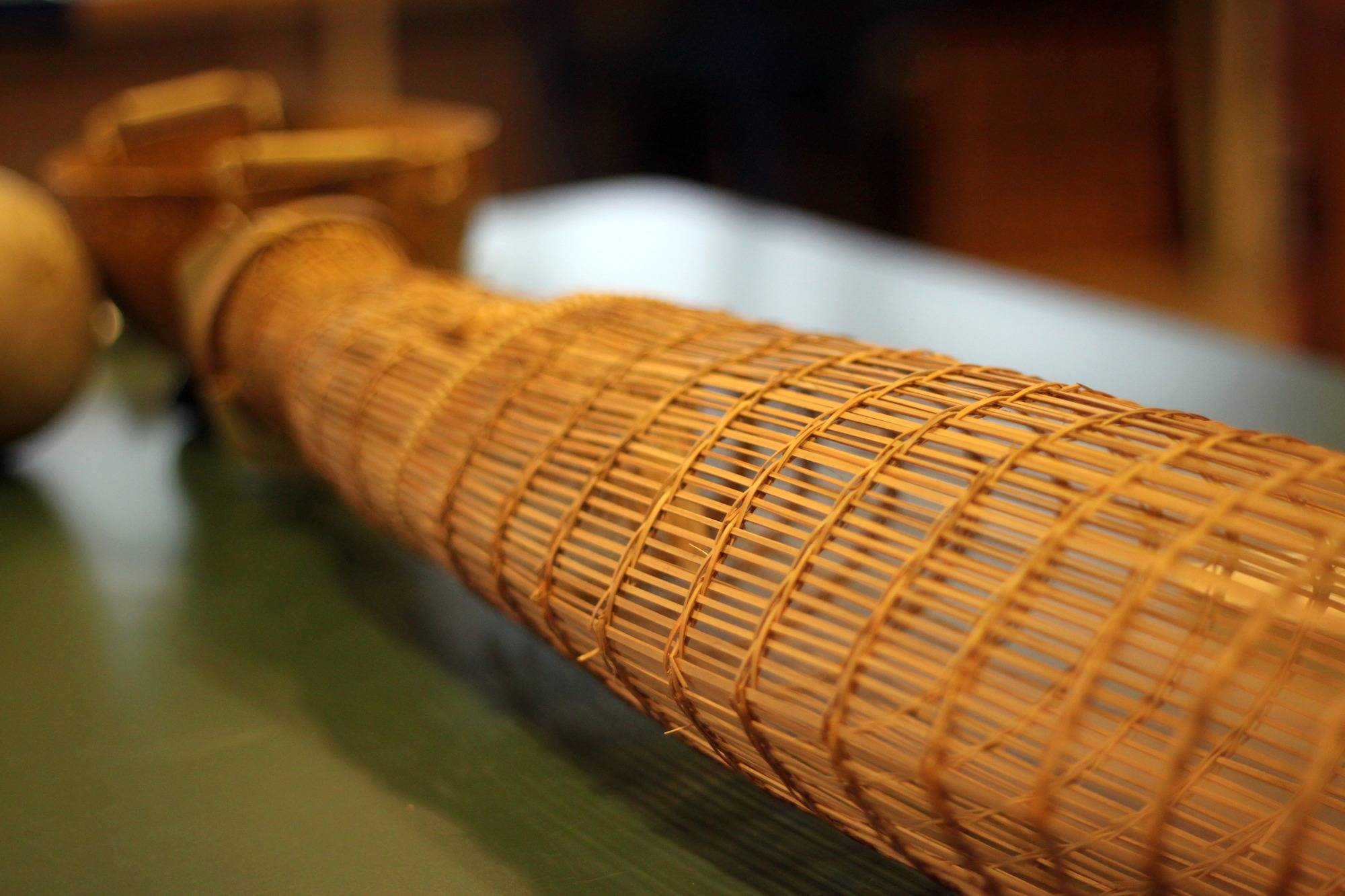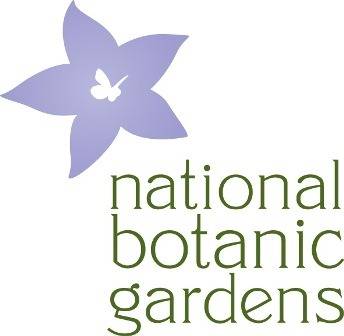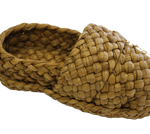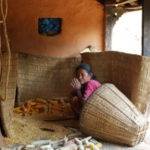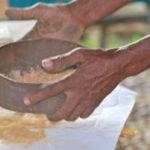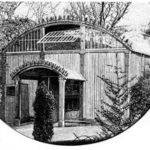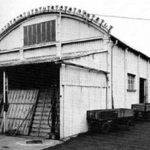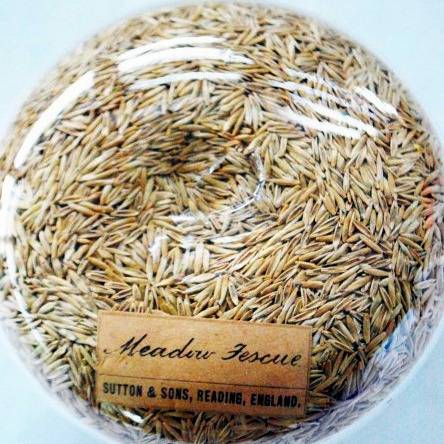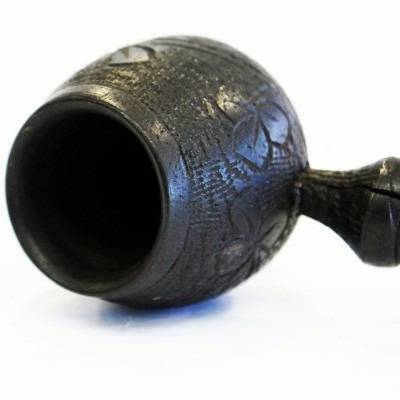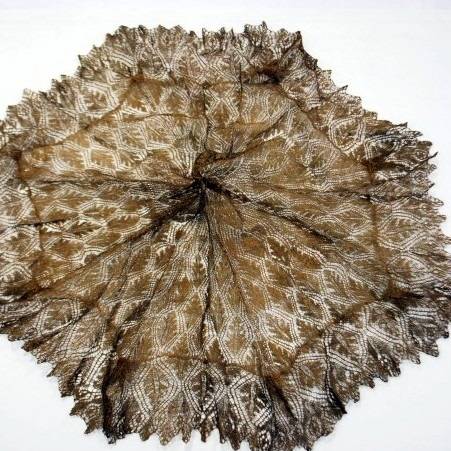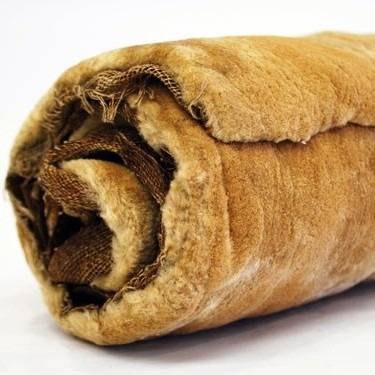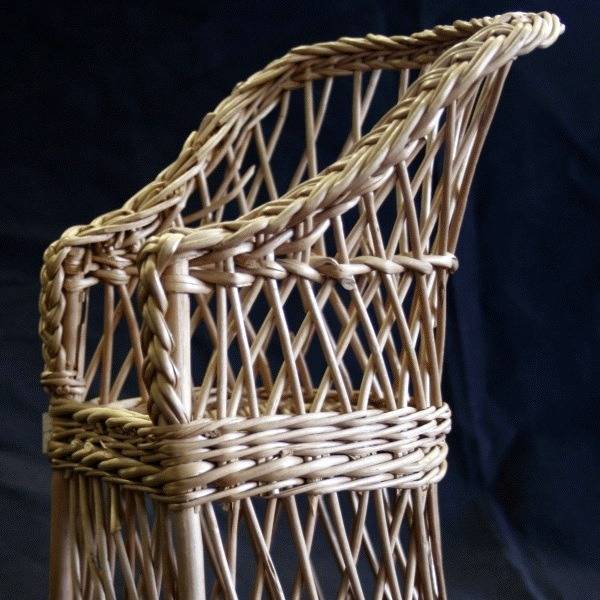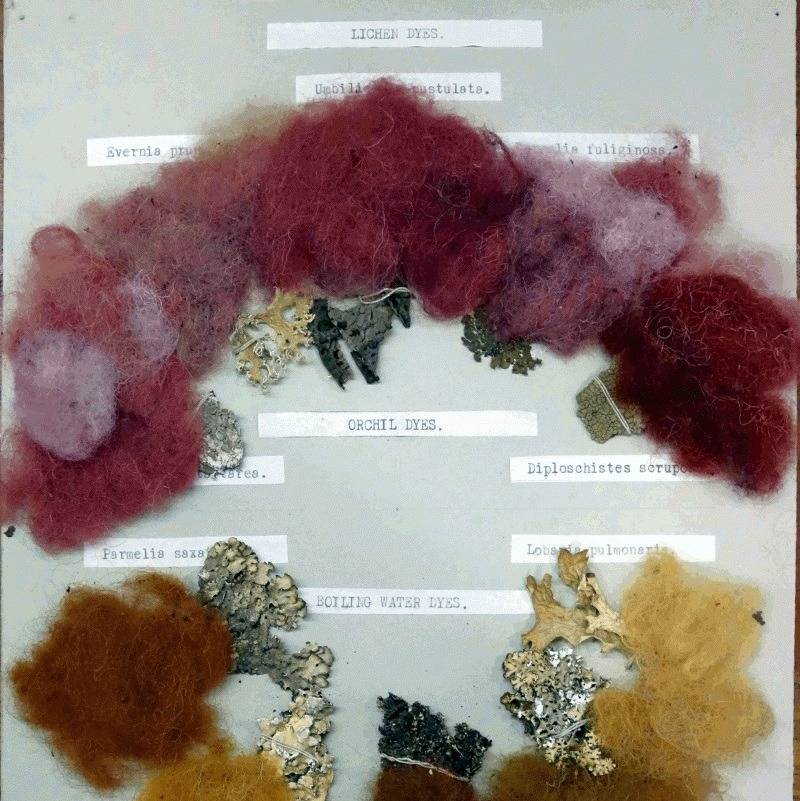The Economic Botany Collection is housed in the National Herbarium at Glasnevin.
It is a made up of a substantial collection of plant specimens such as bark, fruits, leaves, fibres, tubers as well as plant-derived products and artefacts. It demonstrates the technology, craft and knowledge involved in the production of plant products; how humans have utilised and managed their environments over time and how plants have influenced and shaped humanity. As humans have developed and adapted to the natural environments in which they live, nature has simultaneously influenced cultural beliefs, knowledge systems, languages and practices.
From time to time exhibits are on display in the Visitor Centre of the Botanic Gardens. Previous exhibitions have included items associated with the Irish Patriot Sir Roger Casement, who donated plant material from, what was then the Belgian Congo. The Economic Botany Collection is housed in the Botanic Gardens, Glasnevin, and is available for consultation by appointment only. If you would like to consult any item, please contact us.
Use the section menu to the left to navigate this page, or simply scroll down.
About the Collection
The industrial and urban societies in which we find ourselves today create an ever widening gap between us and our natural environment. With a lack of understanding of the botanical origins and processes involved in the production of materials, food, and medicines, our lack of recognition for the overexploitation of natural resources, and the social and environmental consequences that follow, increases.
Gene-banks and botanic gardens work towards the ex-situ conservation of our biological heritage, but humans are an intrinsic part of nature, interrelated and mutually supportive and the conservation of biological diversity is futile without the “human intellectual ‘gene pool'” from which communities draw upon for adaptive and sustainable measures. The Economic Botany Collection plays a pivotal role in the preservation of our tangible and intangible bio-cultural heritage. Together with botanic gardens these collections can work to enhance peoples’ experiences with the natural world while bridging the gap between plants and products. As a repository for traditional and modern uses of plants throughout the world, the collection is an important resource for research and education providing invaluable data to a diverse group of disciplines such as History, Medicine, Agriculture, Anthropology, Ethnobotany, Nutrition, Pharmacology, Horticulture, Biochemistry and the Arts. Its potential for promoting the importance of cultural diversity from an environmental perspective, and documenting and promoting intangible cultural heritage of both past and present cross-cultural adaptations of plants, is far reaching.
The collection is gradually being accessioned and catalogued following guidelines outlined in The Economic Botany Data Collection Standard by Frances E.M. Cook.
Reference: McNeely (1997) in Maffi, L. 2004:12 ‘Maintaining and Restoring Biocultural Diversity: The Evolution of a Role for Ethnobiology’ in Carlson, T. J. S. and Maffi, L. Ethnobotany and Conservation of Biocultural Diversity (The New York Botanical Garden Press).
- Shoe
- Corn
- Cinnamon
Background to the Collection
In 1853, David Moore, Curator of the National Botanic Gardens (1838 – 1879), with support from the Royal Dublin Society, established a Museum of Economic Botany. The collection was originally housed in a prefabricated iron house initially erected for the 1850 Exhibition of Manufactures at the Royal Dublin Society headquarters.
It was furnished with 16 upright and 14 horizontal display cases, and heating stoves, at a cost of £250. Glasnevin already possessed a considerable collection of artefacts and vegetable materials, and this was moved into the display cases. The Society granted the committee of botany £50 to purchase a collections of fibres, barks, gums, oils, and sections of wood that had been exhibited by the British Guiana Department in the Great Industrial Exhibition. In 1856, a collection of cut and polished wood samples, fruits and seeds was acquired from Jamaica, and all the raw fibre products and medicinal plants displayed by Mauritius at the London. Exhibition of 1865 were bought for Glasnevin. Sir William Hooker donated a specimen of the remarkable primitive cone baring plant, Welwitschia mirabilis, which grows only in the Namib Desert in south-western Africa. By the 1880s the Economic Museum had been filled with all sorts of bric-and-brac made form plant materials, Indian canoes, Chinese papers, ‘a beautiful chemisette, made from the fibre of Pine Apple Plant’, spices, preserved fruits, pine cones and drugs, including a ‘fine ball’ of opium presented…by Honourable the East Indian Company’.
Key contributors to the collection include Belfast Ropeworks Co. Ltd., The Imperial Institute, London, the Royal College of Science of Ireland and the Royal Botanic Gardens, Kew. In 1970, the botanical collection of the Natural History Museum was donated to the National Botanic Gardens, Glasnevin. These donations, along with individual acquisitions from all over the world, have created a rich and diverse collection of almost 6,000 artefacts and plant specimens.
Reference: Nelson, E. C. et al. The Brightest Jewel: History of the National Botanic Gardens, Glasnevin, Dublin (1987).
Useful Links
Ethnobotanical reseach and training has become increasingly popular in recent years. Today there are numerous societies, organizations, courses and resource materials available that intertwine with a broad spectrum of disciplines from Anthropology, Archaeology and Linguistics to Botany, Medicine and Biochemistry. The lists that follow are by no means exhaustive, but a starting point to develop your interest and knowledge about the exciting world of people and plants.
Professional Societies
Society for Economic Botany
Society of Ethnobiology
International Society of Ethnobiology
International Society for Ethnopharmacology
Interesting Reads
Ethnobotanical Leaflets International Web Journal
Ethnobotany Research and Applications: A Journal of Plants, People and Applied Research
Journal of Ethnopharmacology
Journal of Economic Botany
International Journal of Intangible Heritage
Langscape
Carlson, T. and Maffi, L. (eds) ‘Ethnobotany and Conservation of Biocultural Diversity’, Advances in Economic Botany Series Vol. 15 (New York Botanical Garden Press, 2004).
Martin, G. Ethnobotany: A Methods Manual (Kew, 2004).
Economic Botany Collections & Databases
Economic Botany Collection, Harvard University Herbaria
The William L. Brown Centre for Plant Genetic Resources, Missouri Botanical Gardens
The Institute of Economic Botany, New York Botanical Gardens
Biocultural Collections
International Ethnobotany Database
Kew Economic Botany Collection
Ethnobotanical Database of Bangladesh EDB
Natural Products alert, NAPRALERT
Dr Duke’s Phytochemical and Ethnobotanical Databases
PROTA Plant Resources of Tropical Africa
PROSEA Plant Resources of South East Asia
Sites of Interest
Centre for Biocultural Diversity CBCD
Global Diversity Foundation
Terralingua, Unity in Biocultural Diversity
The Gaia Foundation
Survival International
Cultural Survival
Botanic Gardens Conservation International BGCI
Bioversity International
TRAFFIC the wildlife trade monitoring network
Traditional Knowledge World Bank
The World Museum Community
IPinCH Intellectual Property Issues in Cultural Heritage
IMA Irish Museums Association
Global Trees Campaign
Plantlife International
Highlights of the Collection
As the Economic Botany Collection is largely in storage, this page was designed to make it more accessible to the public and to generate a better understanding of its contents. The collection is catalogued according to TDWG World Geographical Scheme for Recording Plant Distributions and the TDWG Economic Botany Data Collection Standard. These provide standardized terms and descriptors for plant uses and distribution benefiting collectors and the exchange of information between institutions. Within the standard, objects are placed into three levels depending on their use. Aspects of Levels 1 and 2 are demonstrated in the online collection. Reference sites used in the production of these highlights include PROTA Plant Resources of Tropical Africa, PROSEA Plant Resources of South East Asia, GRIN Germplasm Resources Information Network and The Plant List.
The Botanic Gardens welcomes potential users of the collection for research and educational purposes. Those interested in viewing and using the collection should contact us. The Economic Botany Collection is naturally heterogeneous, and automatically presents itself as multifaceted and relevant to all socio-cultural groups in today’s contemporary society. Regardless of your age, nationality, or gender, if you have information about the use of a particular plant shown online, folk stories, or experiences, we would love to hear from you.
| Catalogue Number | DBN 444 |
|---|---|
| Artefact Description | Seeds of Meadow fescue, a grass foraged by grazing animals. |
| Taxon | POACEAE Festuca sp. |
| TDWG Continent | Europe |
| TDWG Region | Northern Europe |
| TDWG Botanical Country | Great Britain |
| TDWG Use | Animal Food – Grazing |
| Source | Sutton’s Seeds – Sutton & Sons |
| Catalogue Number | DBN 1288 |
|---|---|
| Artefact Description | Charcoal made from Willow wood was used in the production of gunpowder |
| Taxon | SALICACEAE Salix spp. |
| TDWG Continent | Europe |
| TDWG Region | Northern Europe |
| TDWG Botanical Country | Great Britain |
| TDWG Use | Fuels – Charcoal |
| Source | Curtis’s & Harvey, Gunpowder Manufacturers |
| Collection Date | 1897 |
| Catalogue Number | DBN 1102 |
|---|---|
| Artefact Description | Smoking pipe carved from Bog oak. Ireland is well known for its peat bogs and their ability to naturally preserve organic materials like trees and bodies. This is on account of their low oxygen level which prevents the normal process of decay. In our bogs lie pine, oak and yew trees and forests that have been preserved for thousands of years. During the 19th Century this wood was used in rural households as fuel and to make furniture. Small bog oak souvenirs and jewellery were also popular in previous times. Today, the wood is greatly admired for its unique features and colour and is used by a growing number of artists and furniture makers. |
| Taxon | FAGACEAE Quercus sp. |
| TDWG Continent | Europe |
| TDWG Region | Northern Europe |
| TDWG Botanical Country | Ireland |
| TDWG Use | Materials – Wood |
| Catalogue Number | DBN 5951 |
|---|---|
| Artefact Description | Spinning top made from the acorn of Lithocarpus |
| Taxon | FAGACEAE Lithocarpus |
| TDWG Continent | Asia-Tropical |
| TDWG Region | Papuasia |
| TDWG Botanical Country | Papua New Guinea |
| TDWG Use | Materials – Other Materials |
| Donor | Jebb, Matthew |
| Donor Date | 2009 |
| Collector | Jebb, Matthew |
| Collection Date | 1983 |
| Collection Notes | Purchased in Lae |
| Catalogue Number | DBN 3963 |
|---|---|
| Artefact Description | Octagonal, hand-knit lace parasol cover made from wild Convolvulus fibres circa mid 1800s. Glasnevin has a number of unique lace-works of Irish origin made from a variety of fibres including Nasturtium (Tropaelum sp.), sweet pea (Lathyrus odaratus), marshmallow fibres (Althaea officinalis) and wild Convolvulus fibres. The hand-made lace industry was extremely significant during the Irish Famine of 1845-47. During this time middle class women led famine relief programmes that taught the craft of lace-making providing income where it would otherwise have been absent. Irish lace of the mid-1800s included Carrickmacross and Limerick Lace, needlepoint, netting, kitted laces, crochet, bobbin and reticella. Today the tradition of lace making continues across Ireland and encouraged and supported through societies such as the Traditional Lacemakers of Ireland and the Guilde of Irish Lace Makers. |
| Taxon | CONVOLVULACEAE Convolvulus sp. |
| TDWG Use | Materials – Fibres |
| Source | Royal College of Science Collection, Ireland |
| Notes | For more information see: Dunlevy, M. and Nelson, E.C. 1995. Sir William’s Irish lace gifts from an Irish Viscountess. Curtis’s Botanical Magazine 12: 220-236. |
| Catalogue Number | DBN 2951 |
|---|---|
| Artefact Description | Rug made from bulrush inflorescence fixed on canvas. In Ireland the bulrush was considered a fairy plant. This is evident through its Irish name, coigeal na mban sí or ‘fairy woman’s spindle’. It was traditionally used to make baskets and mats. Rushes from the plant family JUNCACEAE were also used for making candles, thatch for houses, toys and bedding. The young shoots, leaves and inflorescence are edible. |
| Taxon | TYPHACEAE Typha latifolia |
| TDWG Continent | Europe |
| TDWG Region | Western Europe |
| TDWG Botanical Country | Ireland |
| TDWG Use | Materials – Fibres |
| Catalogue Number | ? |
|---|---|
| Artefact Description | Doll’s chair made from willow at the Connemara Basket Factory, Letterfrach, c.1880s. This workshop was established by Sophia Sturge, a benevolent Quaker lady from a wealthy background who dedicated many years to bringing employment to a then struggling community. The workshops produced both wickerwork items and furniture. |
| Taxon | ? |
| TDWG Continent | ? |
| TDWG Region | ? |
| TDWG Botanical Country | ? |
| TDWG Use | ? |
| Catalogue Number | ? |
|---|---|
| Artefact Description | Disposable soles woven from rice straw to provide grip on snow and ice for tourists visiting Mt Omei Shan, Sechuan Province, China. Collected by Matthew Jebb in 2001. |
| Taxon | ? |
| TDWG Continent | ? |
| TDWG Region | ? |
| TDWG Botanical Country | ? |
| TDWG Use | ? |
